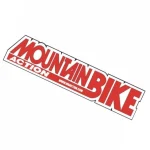B’S Buzz: Price Is Irrelevant
Price Is Irrelevant
I’ve received quite a few messages from readers, friends, and family all wondering what bike they should buy and why. Of course, I’m always happy to share my expertise, but it’s hard to pinpoint a great bike solely based on price. I’m sure I’ll ruffle some feathers here, but to me, price is irrelevant. Yup, I said it. The level of fun you will have on a $3000 bike is nearly the same as the fun you will have on an $8000 machine. At the end of the day, it’s more about the type of bike and the skill set of the rider than the price.
HEAD-TO-HEAD BATTLE
Let’s put it this way: if I had Nino Schurter’s bike and he happened to be on the most entry-level version of his bike we could find, he would work me over to the moon and back on any trail at any time. The same goes for any World Cup downhiller. Talent and fitness outperform machinery almost every time. Just because you can afford more doesn’t mean you’ll be any faster than you were.
DON’T RIDE JUNK
Okay, so you may not need a $10,000 bike, but that doesn’t mean you should run down to the department store and buy a $100 bike and expect to survive a ride on your local trails. It’s important to weigh out the pros and cons of what you need and what you expect to get out of your purchase. An aluminum-framed bike might offer better components than a carbon-framed bike at the same price point; however, if you plan to upgrade your bike down the road, the lightweight carbon frame will offer a better foundation to build on and may even allow you to build up your bike over time to meet your performance needs. If you plan to just ride your bike till the wheels fall off, then an aluminum model with quality components could be a better option for you.
PURPOSE-BUILT BIKES
An important part of the bike-buying process is understanding what the bike was built for. To people outside our sport, a bike is simply a bike, but that couldn’t be further from the truth. In the same way, someone might buy a diesel truck to pull a heavy trailer but buy a small hybrid car to commute to work and back, bikes are purpose-built to excel in different situations. The obvious choice for most riders is to opt for a trail bike that combines climbing and descending efficiencies to provide a balanced feel for all-around riding. Meanwhile, an XC bike might fly up climbs but require more attention to safely head downhill. When you see your cycling friend’s garage full of bikes, you may think he or she has a serious problem, and while it may be a little true, riders justify their many bikes by using them for different styles of riding.
BACK TO MY POINT
Now, when it comes to determining the amount of money you really should spend on a bike, the question is, what can you comfortably afford to own, work on and maintain? If you can afford the best, then buy the best, but don’t expect to ride like the best without putting in years of dedication to the sport. On the other hand, if you have a tight budget, there’s no need to fret, as entry-level and mid-level bikes of today are truly great buys. If a top-tier bike is out of your reach, I’m here to assure you you’re not missing out. While these elite bikes are a pleasure to ride, the fun factor is nearly the same on a bike half the price. Okay, now enough of this rant. Let’s all get out on the trails and “run what you brung.”
Follow me at brandon_castelli![]()
THERE ARE SO MANY WAYS TO GET MOUNTAIN BIKE ACTION
Mountain Bike Action is a monthly magazine devoted to all things mountain biking (yes, that’s 12 times a year because we never take a month off of mountain biking). It has been around since 1986 and we’re still having fun.
Start a subscription by clicking here or calling (800) 767-0345.





